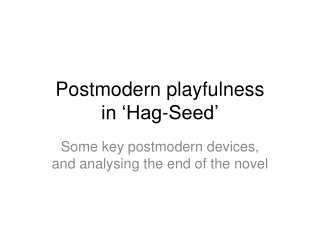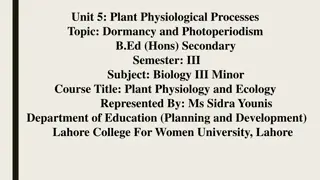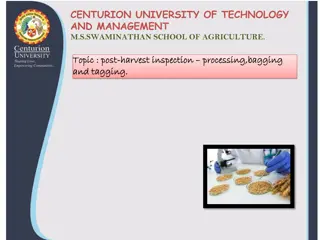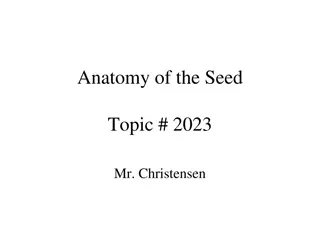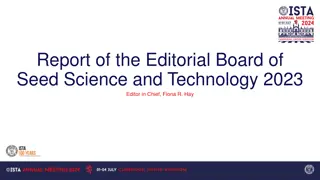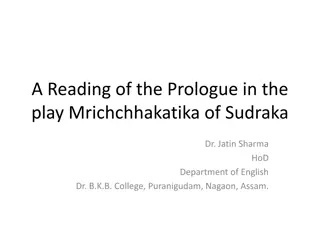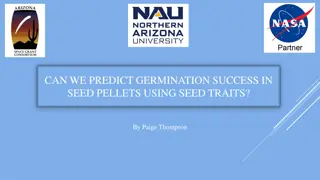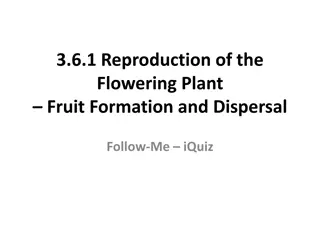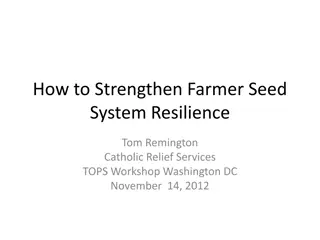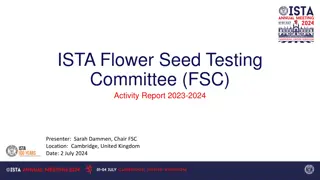Exploring Performance and Storytelling in 'Hag-Seed' Prologue
In the prologue of "Hag-Seed" by Margaret Atwood, the performative nature of storytelling is vividly portrayed through the setting of a theatrical performance within the novel. Atwood intertwines themes of reimagining existing stories, life as a performance, and the connection to Shakespeare's works. The prologue prompts reflection on the experimental and transformative aspects of storytelling, enticing readers to delve deeper into the layered narrative that blurs the lines between reality and performance.
Download Presentation

Please find below an Image/Link to download the presentation.
The content on the website is provided AS IS for your information and personal use only. It may not be sold, licensed, or shared on other websites without obtaining consent from the author. Download presentation by click this link. If you encounter any issues during the download, it is possible that the publisher has removed the file from their server.
E N D
Presentation Transcript
Hag-Seed The Prologue The house lights dim. The audience quiets.
The opening The house lights dim. The audience quiets. - Immediately, Atwood establishes the performative nature of the novel. A sense of gravitas is established using the magic of the theatre. We know that a story is beginning, but not in the usual way. Atwood chooses to commence her novel with a dramatic script, which of course is the script version of the play that Felix and the prisoners stage later in the story. From the outset though, the importance of performing and re-performing stories is established. QUESTIONS: 1. what is suggested by the jagged yellow lettering of the play s title? 2. the announcer s rap-style, scene-setting introduction says a lot about Atwood s style. What can we expect?
An artists portrayal of Miranda watching Prosperos tempest shipwreck the King s ship. Artist: John Waterhouse, 1916
Now were gonna start the playin The Announcer signals the commencement of the prison play with these words Consider how they relate to Shakespeare s famous words: All the world s a stage, And all the men and women merely players; They have their exists and their entrances, And one man in his time plays many parts - As You Like It
Life as performance Ervin Goffman was perhaps the first to consider how our lives can be understood as performances This rhymes in many ways with the postmodern approach to literature of acknowledging that no story is original, and that by experimenting with and transforming stories that have already been told, we are able to tell reimagined stories about our lives Postmodern literature tests boundaries, embraces disorder, and often plays with the act of storytelling itself Re-read the remainder of the Prologue and discuss, in pairs or groups, how these ideas resonate in Atwood s opening act of the novel.
Writing task Imagine you are a literary historian from far off into the future (perhaps the 50th Century) You have just discovered a surviving copy of the Prologue to Hag-Seed . Shakespeare s plays are still reasonably well-known, but your knowledge of The Tempest is limited Write a reflective journal entry about your discovery, and speculate on how this author from the 21stCentury might have been conversing with a much older work. Attempt, as your hypothetical historian self, to make sense of the Prologue s purpose


